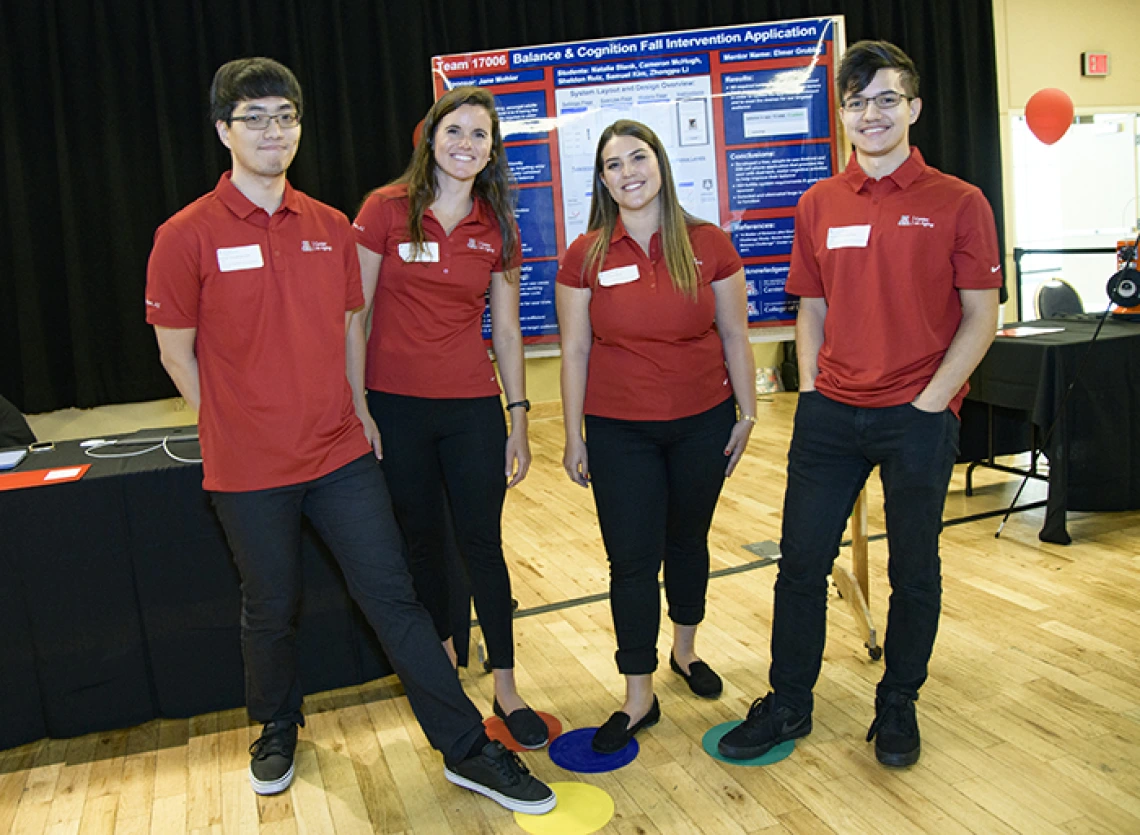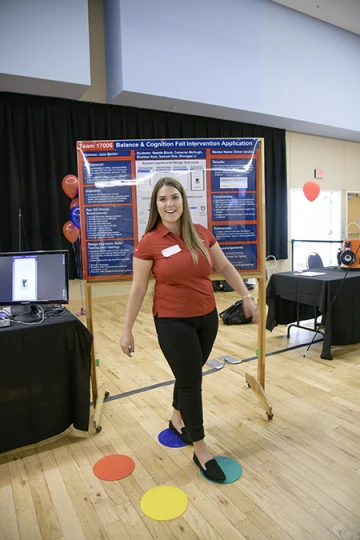Engineering Seniors Create Exercise App to Enhance Balance, Reduce Fall Risk


Project Title: Balance and Cognition Fall Intervention Application
Team 17006 Members:
Rose Blank, engineering management with systems and industrial engineering minor
Samuel Younghwan Kim, biomedical engineering
Zhongpu Li, electrical and computer engineering
Cameron McHugh, biomedical engineering
Sheldon Ruiz, electrical and computer engineering
Sponsor: Arizona Center on Aging
Students Focus on Helping People, Improving Lives with Smartphone App
Adults ages 60 and older have an increased risk of falling — and injuring themselves — due to diminished neuromuscular feedback. But performing simple exercises can increase neuromuscular control and enhance balance, posture and position awareness, reducing fall risk.
Team 17006 created the UA Balance app, a simple iOS– and Android-compatible smartphone app that guides users through exercises, offers motivational notifications, and tracks progress to keep them engaged.

A member of team 17006 demonstrates how to use their app
Users place red, green, yellow and blue circles onto the ground, and the app’s audio instructs them to touch their feet onto the circles in alternating patterns — almost like a solo, feet-only game of Twister. The exercises can be done either sitting or standing.
“All of us know somebody who has fallen,” said team member Cameron Fay McHugh, who has helped her own grandmother to try the program. “It was really fulfilling to work on an app that can hopefully decrease those numbers. Engineering is pointless if it cannot be used to help people and, in some way, improve their lives.”
Must-Have Medical App
MedPage Today, an online resource for health care professionals and physicians, has taken notice of the team’s work, naming it one of the “Must-Have Medical Apps” for two weeks in a row in May.
While significant research went into studying the best evidence-based dual motor-cognitive exercises, and the students needed expertise from several different areas of engineering, McHugh said the most challenging part of the project was keeping its audience in mind.
“We’re designing an app that’s used on a smartphone, and our main audience is 65 and older,” she said.
To accommodate this, the team created an extremely simple interface, with a navigation tutorial that can be accessed at any time. Users can also change everything from the app’s font size to the repetition, duration and tempo of the exercises.
Jane Mohler — professor in the UA’s College of Medicine – Tucson, associate director of the Center on Aging and the team’s technical mentor — said the team made an important contribution to the field of fall intervention by programming and testing the app.
“By collaborating with a senior engineering team, you can receive meaningful help while helping to train our future engineers in how to work productively in a team,” she said.

